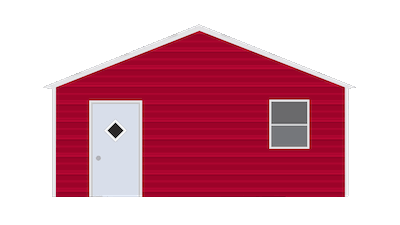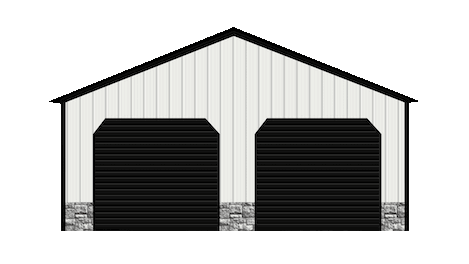Introduction
Welcome back, metal enthusiasts! Today, we’re diving deep into the evolution of metal buildings and exploring how they’ve transformed into the architectural marvels we see today. From humble beginnings to modern masterpieces, metal buildings have come a long way, blending functionality with innovative design. So, grab your hard hats and let’s explore the journey of metal buildings through the ages!
The Birth of Metal Buildings
Metal buildings have been around for centuries, dating back to ancient civilizations such as the Romans and Egyptians. These early structures utilized basic metal elements like iron and bronze for support and durability. However, it wasn’t until the Industrial Revolution that metal buildings began to take shape in the modern sense. With advancements in manufacturing and engineering, steel emerged as the primary material for constructing large-scale metal buildings.
The Industrial Revolution, a period of significant technological advancements in manufacturing and production processes, laid the foundation for the widespread use of metal in construction. This era saw the rise of steel as a dominant material due to its strength, versatility, and affordability. Engineers and architects embraced steel’s properties, paving the way for the construction of iconic structures that would redefine skylines across the globe.
Rise of Steel Structures
The 20th century saw a significant shift towards steel as the preferred material for building construction. Steel offered unparalleled strength, versatility, and cost-effectiveness, revolutionizing the industry. Iconic structures like the Eiffel Tower and the Empire State Building showcased the potential of steel in architecture, inspiring a new era of design possibilities.
The emergence of steel-framed skyscrapers marked a turning point in architectural history. These towering structures, made possible by steel’s strength and flexibility, allowed cities to grow vertically and accommodate growing populations. Architects experimented with innovative designs, pushing the limits of engineering and challenging conventional notions of building aesthetics.
Industrial Applications
Metal buildings found widespread use in industrial applications, serving as warehouses, factories, and storage facilities. Their modular design and quick assembly made them ideal for businesses looking to expand rapidly. Additionally, advancements in insulation and climate control technology made metal buildings suitable for a variety of environments, from arctic tundras to scorching deserts.
The versatility of metal buildings made them indispensable in industries requiring large, open spaces and durable structures. Factories and warehouses embraced metal construction for its efficiency and cost-effectiveness, allowing businesses to maximize productivity while minimizing construction time and costs. Metal buildings also provided flexibility for expansion and customization, enabling businesses to adapt to changing market demands with ease.
Architectural Innovation
As the demand for sustainable and eco-friendly construction practices grew, architects began to reimagine the possibilities of metal buildings. Designers started incorporating elements like solar panels, green roofs, and recycled materials to create energy-efficient structures with minimal environmental impact. This shift towards green building practices has propelled metal buildings into the forefront of sustainable architecture.
The integration of sustainable design principles into metal buildings has led to the development of innovative solutions that prioritize energy efficiency, resource conservation, and environmental stewardship. Architects and engineers collaborate to design buildings that minimize their carbon footprint and promote occupant health and well-being. From passive solar design to rainwater harvesting systems, metal buildings showcase a holistic approach to sustainable construction.
Customization and Versatility
One of the most remarkable aspects of modern metal buildings is their versatility and customization options. Whether it’s a sleek office space, a contemporary art gallery, or a rustic barn-style home, metal buildings can be tailored to suit any aesthetic or functional requirement. With advancements in computer-aided design (CAD) and prefabrication techniques, architects and builders can create unique, bespoke structures with ease.
The modular nature of metal buildings allows for endless design possibilities, enabling architects to create custom solutions that meet the specific needs and preferences of their clients. From multi-story office complexes to intimate residential dwellings, metal buildings offer flexibility in layout, form, and finish. Additionally, prefabricated components streamline the construction process, reducing project timelines and costs while maintaining quality and consistency.
Integration of Technology
The integration of technology has further enhanced the functionality and efficiency of metal buildings. Smart sensors, automation systems, and digital monitoring tools allow building owners to optimize energy usage, improve security, and streamline operations. From remote-controlled HVAC systems to real-time performance analytics, technology has transformed metal buildings into smart, connected spaces for the future.
Advancements in building automation and digital connectivity have revolutionized the way metal buildings are designed, constructed, and operated. Building management systems (BMS) enable remote monitoring and control of building systems, ensuring optimal performance and occupant comfort. Smart sensors and IoT devices provide valuable data insights that inform decision-making and drive continuous improvement in building performance and sustainability.
Also Read: 9 REASONS WHY METAL GARAGES ARE THE ULTIMATE STORAGE SOLUTION
Sustainable Solutions
In an era of increasing environmental awareness, sustainable construction practices have become paramount. Metal buildings are leading the charge towards a greener future, thanks to their recyclability, energy efficiency, and durability. By minimizing waste, reducing carbon emissions, and utilizing renewable energy sources, metal buildings are setting new standards for sustainable architecture.
The adoption of sustainable design and construction practices has become a key priority for architects, builders, and developers seeking to minimize their environmental impact and meet regulatory requirements. Metal buildings offer inherent advantages in sustainability, including the ability to recycle steel components, optimize energy performance, and incorporate renewable energy technologies. From green roofs to passive ventilation systems, metal buildings showcase innovative solutions that prioritize environmental stewardship and long-term sustainability.
Future Prospects
Looking ahead, the future of metal buildings appears bright and promising. As technology continues to advance and environmental concerns become more pressing, metal buildings will play a crucial role in shaping the urban landscape. From high-rise skyscrapers to off-grid retreats, the possibilities are endless for these versatile structures. With innovation driving the industry forward, we can expect even more groundbreaking developments in the years to come.
The evolution of metal buildings is a testament to human ingenuity and innovation. From humble beginnings to cutting-edge marvels, these structures have undergone a remarkable transformation over the centuries. As we continue to push the boundaries of design and sustainability, metal buildings will remain at the forefront of architectural innovation, shaping the cities of tomorrow. So, here’s to the enduring legacy of metal buildings and the bright future that lies ahead!





 Home
Home Products
Products Styles
Styles Resources
Resources Service Area
Service Area About Us
About Us Contact Us
Contact Us Extras
Extras Search
Search Wishlist
Wishlist











